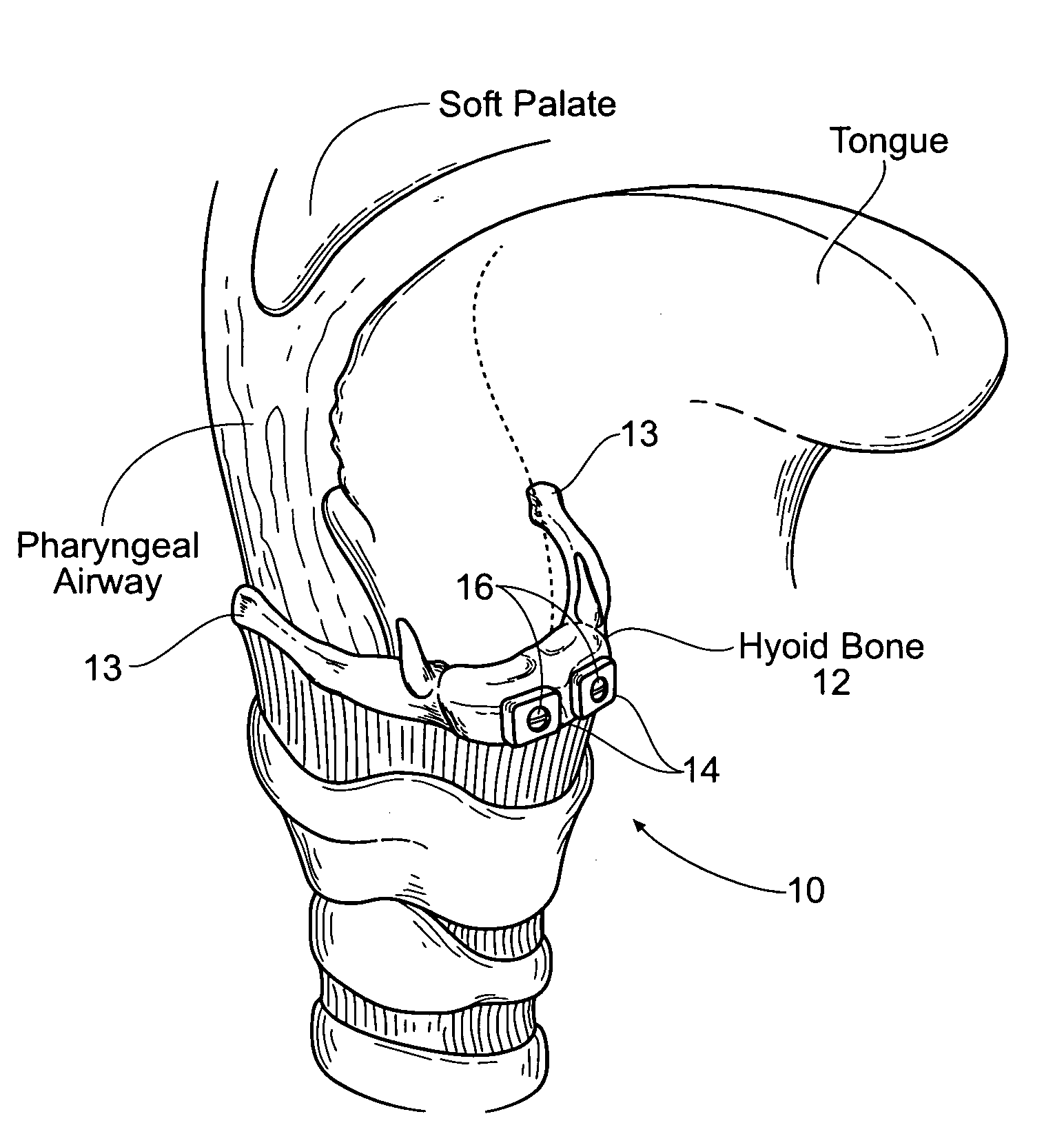Devices, systems, and methods to move or restrain the hyoid bone
a technology of hyoid bone and hyoid bone, which is applied in the field of devices, systems, and methods for moving and/or restrainting the hyoid bone, can solve the problems of affecting the quality of life of patients, and affecting the quality of life of patients, and achieving the effect of preventing or stopping the hyoid bone from falling off, preventing the hyoi
- Summary
- Abstract
- Description
- Claims
- Application Information
AI Technical Summary
Benefits of technology
Problems solved by technology
Method used
Image
Examples
Embodiment Construction
[0041]This Specification discloses various magnetic-based devices, systems, and methods for moving or restraining the hyoid bone and / or muscles attached to the hyoid bone. For example, the various aspects of the invention have application in procedures requiring the restriction of tissue collapse in and / or around the airway.
[0042]The devices, systems, and methods are particularly well suited for treating sleep disordered breathing, including sleep apnea. For this reason, the devices, systems, and methods will be described in this context. Still, it should be appreciated that the disclosed devices, systems, and methods are applicable for use in treating other dysfunctions elsewhere in the body, which are not necessarily sleep disorder related.
[0043]I. Anatomy of the Hyoid Bone, the Muscles Attached Thereto, the Thyroid and Cricoid Cartilages of the Larynx
[0044]As FIG. 1 shows, the hyoid bone lies in the anterior part of the neck at the level of the C3 vertebra in the angle between th...
PUM
 Login to View More
Login to View More Abstract
Description
Claims
Application Information
 Login to View More
Login to View More - R&D
- Intellectual Property
- Life Sciences
- Materials
- Tech Scout
- Unparalleled Data Quality
- Higher Quality Content
- 60% Fewer Hallucinations
Browse by: Latest US Patents, China's latest patents, Technical Efficacy Thesaurus, Application Domain, Technology Topic, Popular Technical Reports.
© 2025 PatSnap. All rights reserved.Legal|Privacy policy|Modern Slavery Act Transparency Statement|Sitemap|About US| Contact US: help@patsnap.com



